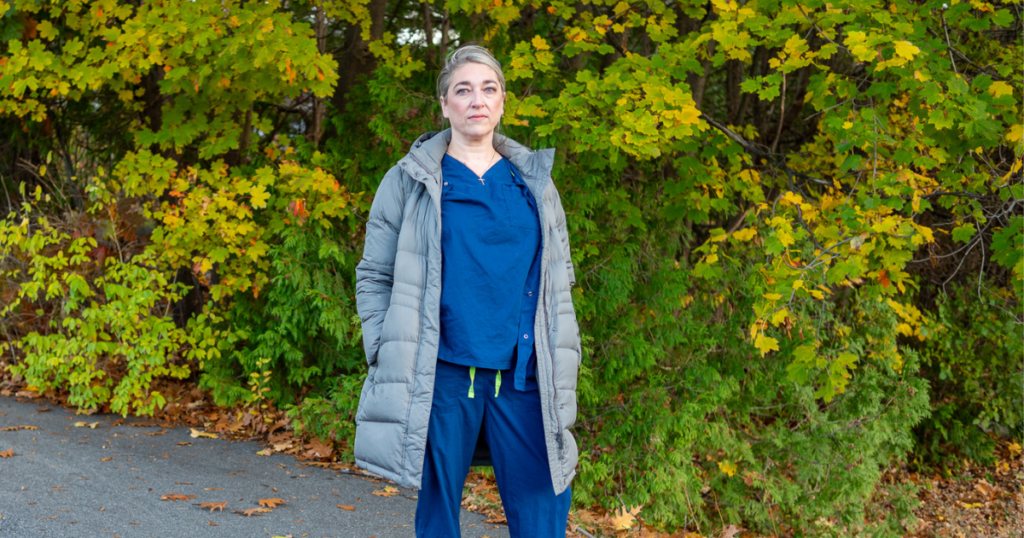Erin shared her story as part of MECEP’s State of Working Maine 2023 report. Click here to read the full report.
Erin is a nurse with 22 years of experience in hospital units. For the last 10 years she has worked as a labor and delivery nurse at a central Maine hospital.
Our labor and delivery unit serves two-thirds of the state. We’ve always taken the higher risk patients because we have a neonatal intensive care unit, but in the last few years we’ve also started taking patients who would have gone to their community hospital before those labor and delivery units closed down. Many of our patients travel more than two hours for both prenatal care and their actual delivery.
What we found out during COVID was that we were understaffed. We had this just-in-time model for staffing and supplies. I thought they would really learn from that, but they didn’t. What they learned is that nurses could do more with the same — or even less. “That’s good enough for them, and that’s how we’ll continue.” I love my job. I don’t love the conditions. It feels morally injurious to have been called health care heroes for two years, and then change nothing to make things better.
We still don’t staff for an influx of patients. We have a set number of nurses scheduled. A lot of times that works, but there are plenty of times when it doesn’t. They should have learned that we can no longer staff for an “average day” or an “average load” or what the computer metrics tell them. When you’re delivering terrible news to someone, you’re going to sit with them for as much time as it takes. Computer metrics can’t reflect that human need. Hospitals are constantly rolling out different charting requirements and different technology that measures risks and monitors patients from another state. We don’t need more technology. Technology does not care for people. We need more nurses.
My daughter is going to be 18 next week. She’s decided to go to nursing school, and I’m scared for her. What will it be like to work under these conditions at 22 years old? It’s hard for me, even with lots of experience and lots of tools in my kit, and I struggle some days. If things were like this when I got out of nursing school, I don’t think I would have lasted more than five years.
And that’s what we’re seeing right now: new grads leaving after two to five years. They’re using their nursing license, but they’re not using it at the bedside because being by the bedside is untenable. Here in Maine, the number of registered nurses has increased in the last five years. We’re graduating more nurses than we’ve ever had, and we still don’t have enough at the bedside, which says that the problem is not the number of nurses who are licensed. It’s the number of nurses who are willing to work in these conditions. For nurses who want to work bedside, I would encourage them to work in a union hospital in a state with patient ratio laws.
Nurse-patient ratios are a safety issue. Many studies show that for every additional patient a nurse has, there is increased risk of patient injury or death. States with nurse-patient ratio laws have also seen nurses return to the bedside. Nurses are scientists. It’s hard when the research says that this is the best practice and the hospital industry says, “No, that’s not how we’re going to make the most profit.” Labor is a big cost, but patients being injured and dying is a higher cost.
We want to help people. We’re not complainers, we’re problem solvers, and no one wants to speak badly of the situation and how awful it is. But it’s just gotten to the point where we can’t stay silent anymore. I love my job. I love my patients. I think I would be really unhappy if I weren’t doing this work. But there are more days than ever where I’ve thought, “Wow, this is not good.” I just hope that we can make some real, meaningful policy changes.




